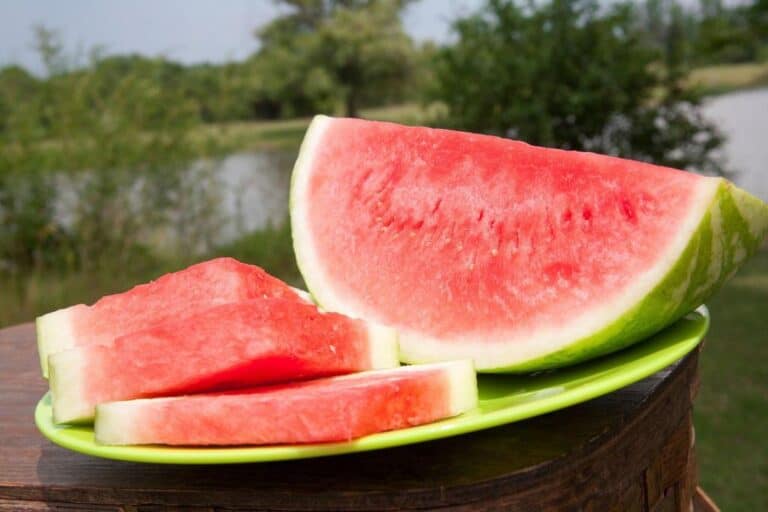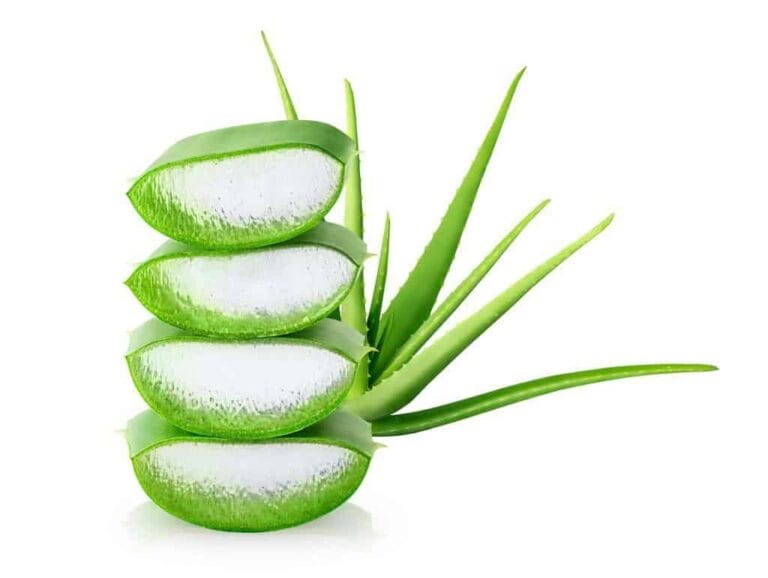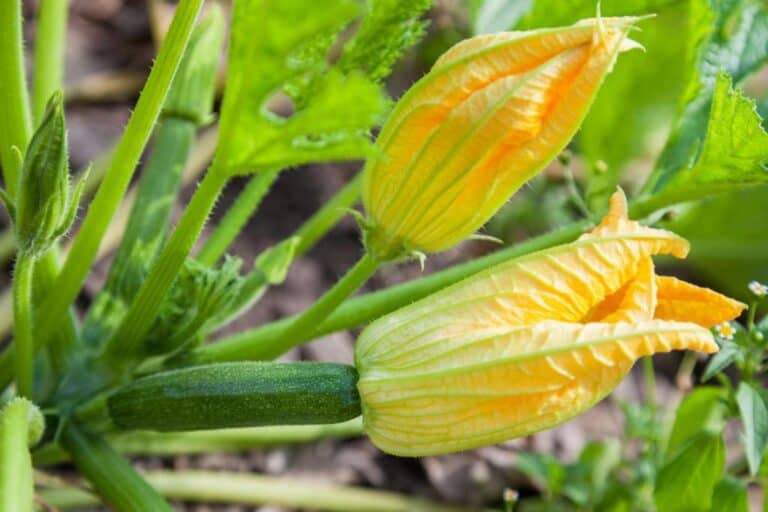Ficus Lyrata (Fiddle-Leaf Fig Tree): Plant Care and Growing Guide
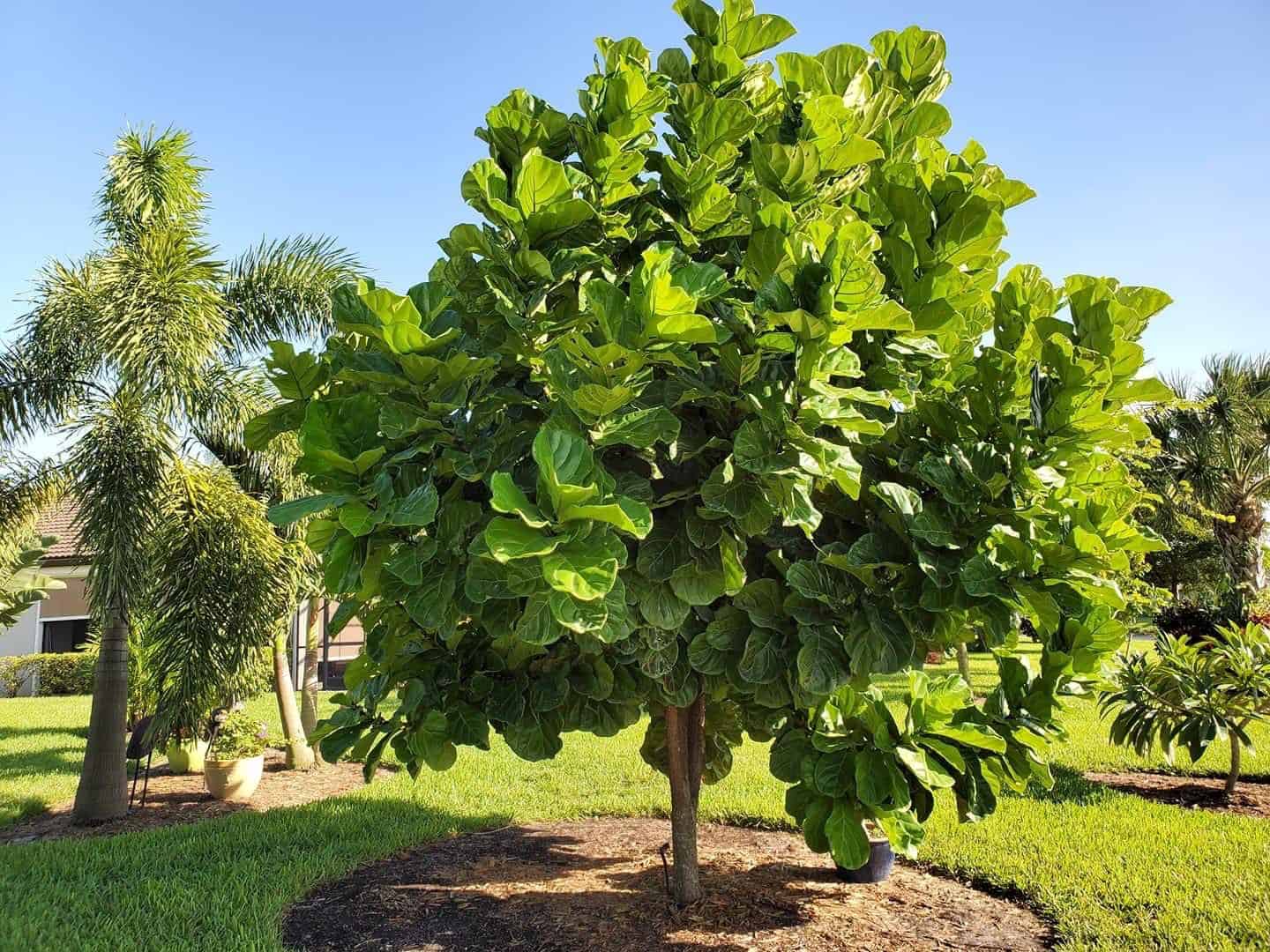
Are you searching for a stunning plant focal point for your office, living room, hallway, reception, or hotel? Meet Ficus Lyrata, the sensational tall-growing indoor star, also known as Fiddle Leaf Fig. It adds a simple, modern touch to your room. Its dark green, violin-shaped leaves catch your eye as you approach. What’s more, the bigger the plant gets, the more beautiful it appears.
To grow and take care of the graceful Ficus Lyrata, here are the basics that you must observe.
- Watering: Water the plant approximately 2-3 times a week to maintain even moisture at all times. Avoid soggy soil to protect the roots.
- Light: Provide bright to moderate light exposure.
- Soil: Use part bark and perlite to ensure that the soil drains well while retaining the necessary nutrients.
- Temperature: The Fiddle Leaf Fig loves temperatures between 600°F and 750°F. The lowest you can go is 550°F.
To show off this beautiful plant, give it special daily care. This will help it thrive and prevent any problems. However, its origin in the tropics makes it challenging for home and office owners to duplicate such steamy conditions.
No worries, though: we have all the tips you need to create a perfect interior design spot for your Ficus Lyrata. Use this gorgeous and extravagant splash of greenery plants having violin-shaped leaves.
This guide is not only meant for first-time plant owners but also gurus who have owned indoor plants for years. Learn cool things about the Fiddle Leaf Fig. You’ll discover how to create a bushy top and a long, graceful trunk. This will make it a standout feature in your home, plus much more!
Ficus Lyrata Basic Caring Guidelines
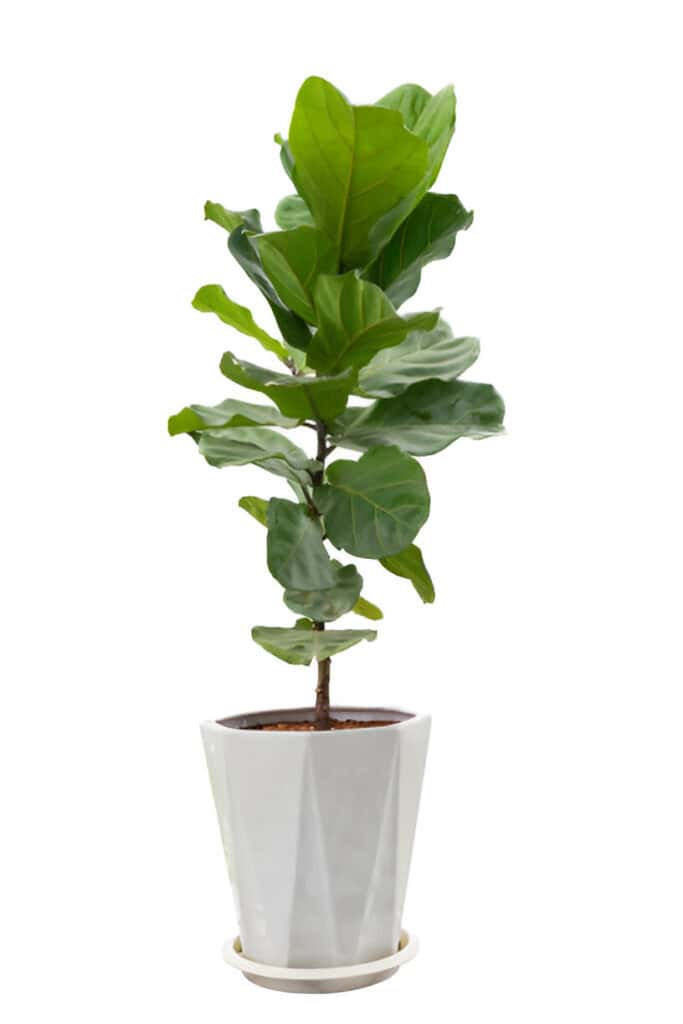
With 10 to 15 years to achieve maturity, the final look of this indoor plant will depend on each care action you take. Here are the basics that will give you a beautiful natural décor from day one.
Watering: how much water does the Fiddle Leaf Fig plant need, and when should I water it?
Being a tropical West African plant, Ficus Lyrata requires a substantial amount of water to survive. However, it will die if you submerge the roots in water—so be sure to only water when a few inches of the topsoil becomes dry.
To determine the dryness, poke the soil with your finger to determine how deep the dry layer of soil goes. This poking technique only applies between spring and fall. In winter, use less water. The soil and leaves hold most of it, plus it’s cold.
Beyond testing the soil, the plant does send signals that it either needs more water or it has more than is necessary. Here is how:
- If the leaves dry and begin to drop, the soil could be waterlogged or too dry.
- Ugly brown spots on leaves are a sign that you should stop watering the leaves.
Proper drainage is as important as regular watering.
Since the plant requires a pot placed on the floor, experts recommend adding a plate that collects the water draining from the pot. It is better to deny adequate plant water than pour more than it needs.
Humidity: Does the Fiddle Leaf Fig plant require misting?
Fiddle-leaf likes humidity a bit higher than average. This helps it feel at home, like in its tropical rain forest habitat. The natural moisture in most homes and offices is sufficient for the plant. However, humidity needs change depending on the season.
The indoor environment also changes because people want warm houses and offices. Such warm interiors will result in dry air that could cause the leaves to wither. Thus, invest in a humidifier near the plant to create the right atmosphere. Alternatively, you can mist the leaves regularly to keep them moist.
However, do not overwater the leaves; else, they will get large brown spots and later wilt.
Read: Celestial Fig (Ficus Carica ‘Celestial’): Plant Care and Growing Guide
Soil: What type of soil do I need for a fiddle-leaf fig?
Ficus Lyrata loves well-aerated soil that will drain fast. This aeration is achieved during potting, especially at the mixing phase. Given the plant’s low sensitivity, we recommend using perlite and part bark.
Remember, the Fiddle Leaf Fig is highly sensitive to chemicals, especially the fluoride found in water. Other sources of chemicals that may be trapped in the soil include fertilizers. Use non-fluoridated water to avoid altering the composition of the soil. Dilute manure or natural compost could be your best bet to dodge damaging chemicals in the soil.
Lighting and location: Where should I place my Fiddle Leaf Fig?
Like every plant, Ficus Lyrata requires adequate light to thrive. The tropics, where this plant thrives, are bright. This means plant owners must create similar conditions.
However, you have to be wary of the quality of direct sunshine on the potted plant: it could cause your plant to stunt and eventually die. Therefore, provide bright to moderate light to your Fiddle Leaf Fig.
Location near the window is perfect for the tree, especially at a young age. It allows the leaves to enjoy the mild morning light while catching a little shine at dusk.
Ficus Lyrata usually searches for light in its young days by bending towards the source. To avoid a crooked trunk, rotate the plant from time to time. When it comes to age, you will need adequate ceiling space so that the showy flowers can find space.
Temperature: Can Ficus Lyrata thrive in my area?
A warm room where people live is the ideal environment for Fiddle Leaf Fig. The temperature should be anything between 55°F and 85°F. If the temperature goes below 55°F, the leaves and roots will send a sign of protest by forming black spots and eventual wilting.
Keep it away from drafts, AC vents, and heaters. They can cause quick temperature changes. Think about not buying plants in winter. The change in environment and transit can lead to frost problems. Extreme temperature variations will also injure your plants.
The Fiddle Leaf Fig can handle some neglect, but it is sensitive to temperature changes and soil chemicals. The plant offers easy guidance for new indoor plant owners. It also rewards experienced caretakers when cared for properly.
But is that all about the Ficus Lyrata?
Ficus Lyrata Advanced Caring Guidelines
Fiddle Leaf Fig requires a little bit more attention than your ordinary indoor plant if it is to live up to its superstar billing in interior décor. There are small aspects of care that will transform a regular indoor plant into a spectacle.
Here are advanced care protocols to observe when you are hosting the Ficus Lyrata. Let’s get down to them, shall we?
Fertilization
Unlike other Ficus species, Lyrata does not need frequent fertilizer applications. Manure can be applied once or twice a year, depending on the age and growth habit of the plant. If you do not want a robust growing plant, you can deny it some fertilizer for some time without adverse consequences. Timing is also essential when applying your fertilizer because it gives you visible outcomes.
The most active growing season is between Spring and Fall, a season where you should add high-nitrogen foliar fertilizer. Ask your arborist for a fertilizer that is formulated specifically for fiddle leaf figs.
Do not apply fertilizer during winter because the plant is dormant. To avoid excessive application, use weak liquid fertilizers or naturally prepared compost.
When you balance fertilizer well, the roots will fill the pot quickly. The leaves will also show strong growth.
Pruning
Pruning allows you to control the height and shape of your Ficus Lyrata plant. It will determine whether the plant fits on your table or will be a bushy feature in the hallway. Pruning must also be timely to avoid stunted growth and even withering.
To achieve a bushy and short stature, prune by cutting the main stem at the tip. Fresh, young, and vibrant leaves will reappear at the point you have cut. Should the tree become spindly, pinch new growth areas at the end of the branch sections just above the leaf nodes.
If you are looking for a treelike Fiddle Leaf Fig, allow it to grow tall. Prune by removing the lower leaves and branches to achieve the treelike structure. It will become a woody trunk with a crown of thick green leaves at the top.
Trimming the roots is also one of the recommended ways to limit the size of the tree. Remove the tree with its soil mold and reduce the size of roots from outside. The best time for root trimming is during the fall and winter seasons to promote a bushier tree.
Repotting and Propagation
Ficus roots are aggressive and can quickly fill the pot. When your plant is young, repot it every spring. Make sure the new container is two inches wider than the old one. It is also a chance to enrich the soil and eliminate soil that could be contaminated by fertilizers and fluoridated water.
As the tree grows, repotting will be a considerable challenge because the plant is unwieldy. To rejuvenate the plant, scoop 2 to 3 inches of soil from the pot and fill the space with a fresh potting mix. You must monitor the water and fertilizer you add to the vase to avoid damaging the soil.
Propagation is easy using moist soil and rooting hormones. Cut the stem at the tip and replant it in the moist soil with the hormones. Heating the bottom will also increase propagation success. If you are even more well-verse in plant caring, you can use air layering.
Read on: Creeping Fig (Ficus Pumila): Plant Care and Growing Guide
Pest Prevention and Hygiene
The biggest challenge you are likely to face from pests comes in the form of scale insects and spider mites. Watch out for the pests to help you take action before the damage is extensive. A home remedy for the parasites is spraying every two weeks using soapy water.
Common diseases affecting the plant include leaf spot disease, root rot, and powdery mildew. Clean your leaves and use the right prevention chemicals. This will help keep your plant disease-free. When using soapy water or pesticides, dry the leaves. The process helps remove chemical residue and prevents bacterial infections.
The large Fiddle Leaf Fig leaves make it simple to both spot dirt and clean them easily. Since the leaves are waxy, cleaning should not be a big problem. Spraying the leaves with water will get rid of dust and tiny pests on the surface, giving you shiny foliage.
Clean leaves are not just essential for aesthetics. They help the broadleaf to absorb more light and nutrients for photosynthesis purposes. Use a damp cloth to wipe the leaves once a month: it will guarantee their beauty and the health of the tree.
FAQs on Ficus Lyrata (Fiddle-Leaf Fig Tree)
Do fiddle leaf figs like coffee grounds?
Yes. Coffee grounds give important nutrients that help leaves grow, making your plant green and bushy. They also encourage soil aeration and drainage, improving the overall health of the plant.
Is Fiddle Leaf fig safe for cats?
No. The sap is irritating and poisonous to cats and horses. Experts recommend the use of gloves when handling the plant extensively.
Is Ficus Lyrata poisonous to dogs?
Yes. It causes watery eyes, vomiting, and irritation. The plant has level #1 toxicity and should be kept away from pets and animals.
Why is my Ficus Lyrata dropping leaves?
Several reasons could be responsible. Tick the one that you think applies to your plant.
Shedding the lower leaves naturally because they are old and need to pave way for new ones
Lack of water and low humidity– by start by turning brown
Environmental changes like a cold draft and during transit
What to do when Ficus Lyrata burns leaves?
Check whether you have exposed the plant to direct sun and change its location. If that is not the case, the problem could be leaf spot disease. Remove the affected leaves and treat the others with a fungicide.
How big is a planter for Ficus Lyrata?
Ficus Lyrata can grow up to six feet indoors. Change the size of your planter each year. This helps provide enough nutrients for strong growth. Make sure it can hold a six-foot tree without tipping over.
How do you know if Ficus Lyrata is dying?
It begins with brown and black spots on leaves. The leaves then drop without producing new ones.
Luckily, you have a chance to revive your plant before it dies off completely. Begin by checking diseases, pests, soil composition, and watering.


